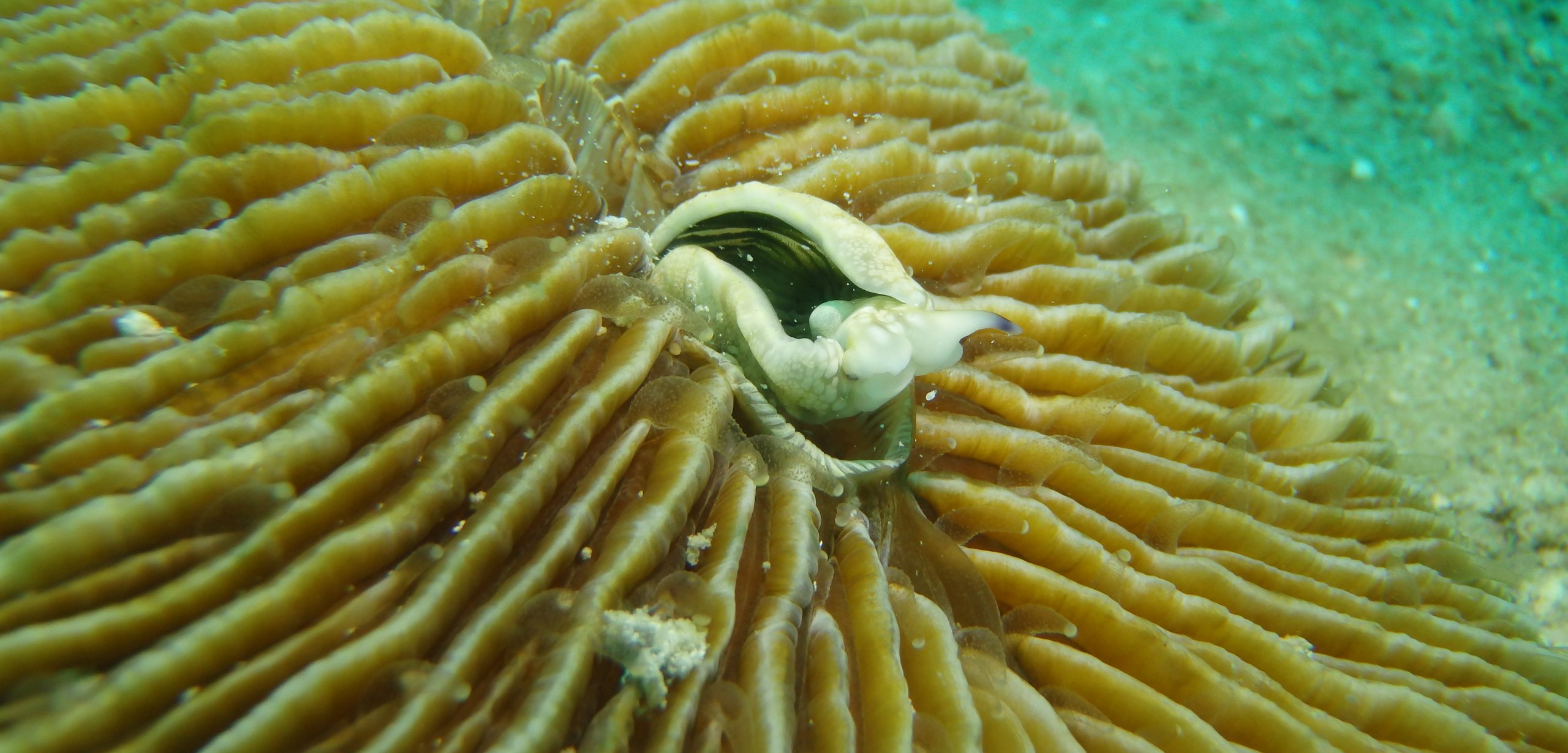Sarlaccs of the Sea
Scientists watched as a coral slowly devoured a sea slug.
Article body copy
Sharks, eels, sea snakes, octopuses—these are the predators we think of when we picture a coral reef. But below all the hum and thrum of the feeding frenzy, another killer lies in wait.
Behold the mushroom coral, a sedentary, solitary cnidarian that looks about as harmless as a broken accordion. But don’t be fooled. Within those delicate folds lurk hundreds of tiny tentacles, each armed with explosive stingers that can disable prey and drag it into the coral’s cavernous maw.
Okay, I’m dramatizing a bit. No divers need worry about getting eaten alive by a mushroom coral. But if you were something much smaller, like a salp, then it’s not at all unfair to call the mushroom coral the Sarlacc of the Sea. (Not to be confused with Sarlaccs of the Toilet!)
Sarlaccs are fearsome creatures that dwell in the deserts of Tatooine.
Highlighting the extent of their appetites, scientists working in the Gulf of Thailand recently documented the first known case of a mushroom coral gobbling a gastropod—a sea slug of the genus Plakobranchus. Over the course of 20 minutes, the scientists watched as the nearly two-centimeter-long slug was pulled deeper and deeper into the coral’s barely-bigger mouth.
“It was definitely a shock,” says Rahul Mehrotra, one of the divers who spotted the scene while conducting a routine survey for the New Heaven Reef Conservation Program.
These corals, Mehrotra says, get most of their energy from a symbiotic relationship with microalgae, and from the plankton that get ensnared in their tentacles.
However, “recent studies have shown things as large as salps and jellyfish also being consumed,” says Mehrotra, who is also a marine biologist at Bangkok’s Chulalongkorn University. “[But] a gastropod is a much more complex animal than the gelatinous mass of salps and jellyfish, and therefore this predatory behavior is in a separate class of its own.”
As to how the slug met its likely doom, Mehrotra guesses that the gastropod accidentally crawled onto the mushroom coral, at which point the tentacles took over. We only say “likely doom,” though, because Mehrotra and his fellow divers didn’t stick around to see if the mushroom coral completely digested the sea slug, which means it’s possible the gastropod was able to escape. (In the Star Wars universe, sarlaccs slowly digested their prey over a thousand years. Escape was rare, though potentially possible.)
Incidents such as these may come to redefine the way we understand these easily overlooked predators. Whether it’s a mushroom coral eating a sea slug or an anemone sucking on the bones of a cormorant chick, the seafloor is full of mouths to feed.
“To some degree all corals are opportunistic predators,” says Mehrotra. “It’s just that most are limited to what can fit into their mouths, and solitary corals, such as mushroom corals, have quite a large gape.”

